In the previous post, we looked at the complete overview and installation of System Center 2019 Virtual Machine Manager or SCVMM.
SCVMM is the ultimate management solution from a Microsoft perspective for managing Hyper-V cluster environments in production. It allows managing Hyper-V environments at scale when looking at managing dozens or even hundreds of Hyper-V nodes and/or clusters. Having this consolidated view of the Hyper-V landscape makes management exponentially easier.
Additionally, SCVMM goes beyond the management of simply creating and provisioning VMs in the Hyper-V infrastructure and expands control over the global infrastructure landscape including storage arrays and Windows PE environments. It can even allow you to manage your VMware vSphere infrastructure all from within the same management interface.
In this post, we will take a look at how to add Hyper-V host cluster to System Center 2019 Virtual Machine Manager.
Adding a Hyper-V Cluster to System Center Virtual Machine Manager
Before we can actually get down to what we can do with System Center Virtual Machine Manager, we first have to add a Hyper-V host or Hyper-V Cluster to SCVMM for management.
To do that, either in the VMs and Services or the Fabric view, right-click the All Hosts folder and choose to Add Hyper-V Hosts and Clusters to begin the process to add a Hyper-V clusterto SCVMM for management.
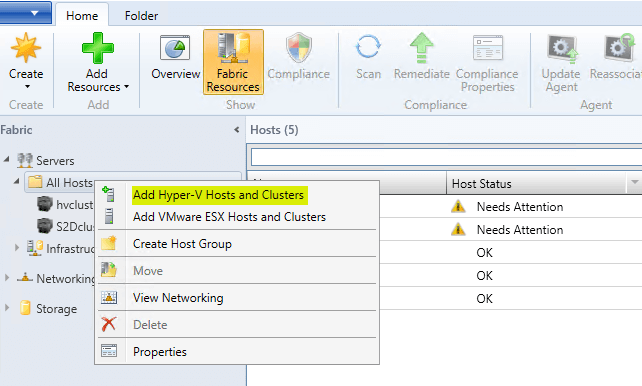
This will launch the Add Resource Wizard. On the first screen – Indicate the Windows computers location, you can see the various options listed here including the following for adding the resource:
- Windows Server computers in a trusted Active Directory Domain
- Windows Server computers in an untrusted Active Directory Domain
- Windows Server computers in a perimeter network
- Physical computers to be provisioned as virtual machine hosts
Here I am choosing the Windows Server computers in a trusted Active Directory Domain.
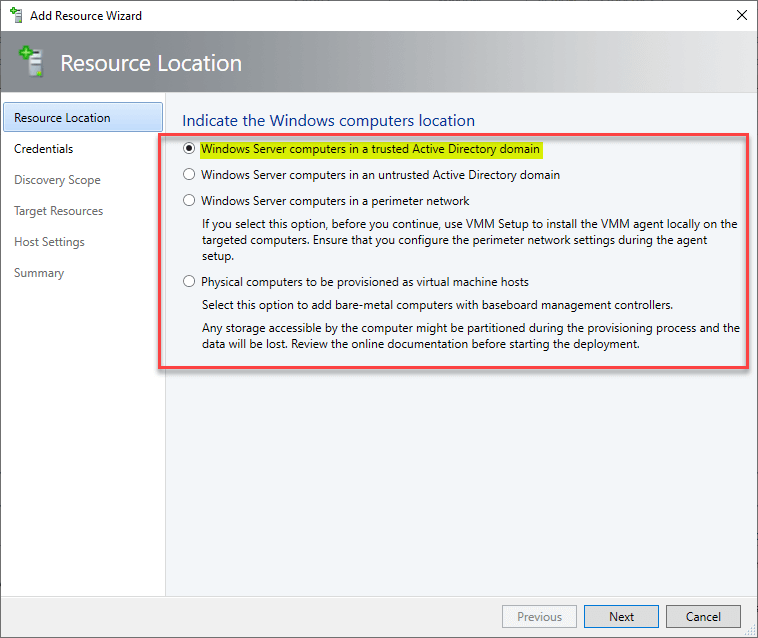
Next, we Specify the credentials to use for discovery. As the wizard notes, the credentials added should be a local administrator on the host machines.
- If a Run As account is provided, then it will be used while adding the host as well as for providing future access to the host during its lifetime
- If credentials are entered manually, then they will only be used while adding the host. Once the host has been successfully added, the VMM service account will be added as a local administrator on the host and used to provide any future access to it
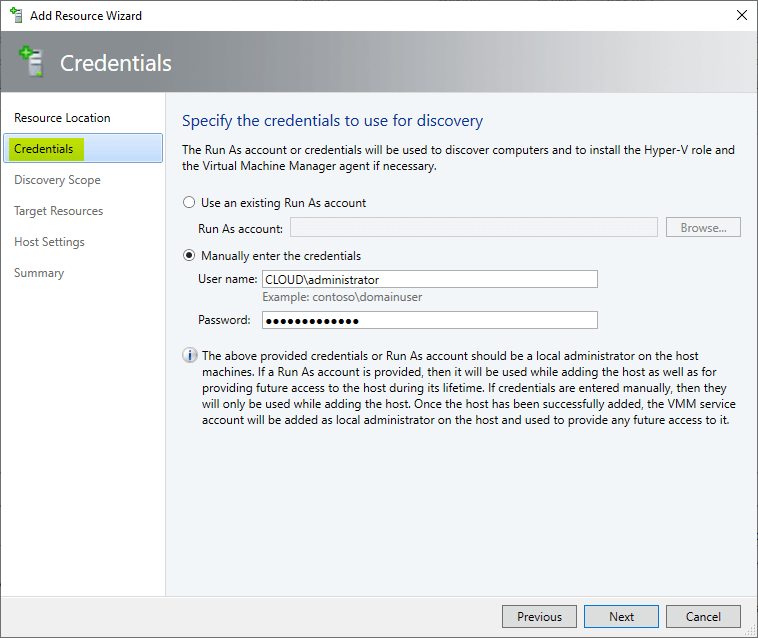
On the Specify the search scope for virtual machine host candidates screen, you can either search for the Windows servers by name or specify an Active Directory query to search for the Windows Server computers.
In this case, I am entering the name of a Storage Spaces Direct Hyper-V Cluster running on Windows Server 2019.

On the Select the computers that you want to add as hosts screen, the wizard has correctly identified the Storage Spaces Direct Hyper-V cluster and also shows the hosts that make up the S2D cluster.
You can select the checkbox next to the cluster name to simply add the cluster and all component Hyper-V hosts, or you can use the Select All button to add all the resources found as well.
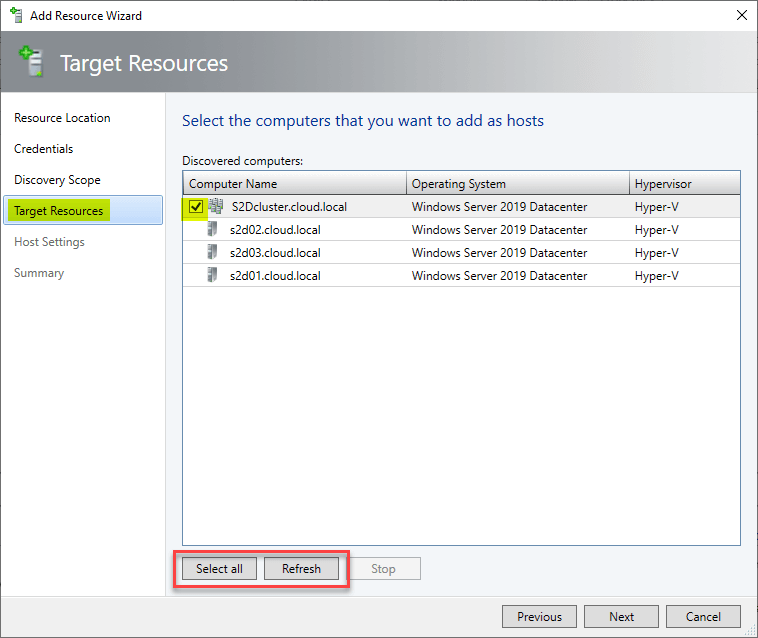
On the Host Settings screen, you Specify a host group and virtual machine placement path settings for hosts. You have a drop-down menu showing the host groups available. You can select the host group you want to place the new host/cluster within. Also, there is a checkbox to Reassociate this host with this VMM environment if the host(s) have formerly been associated with another SCVMM instance.
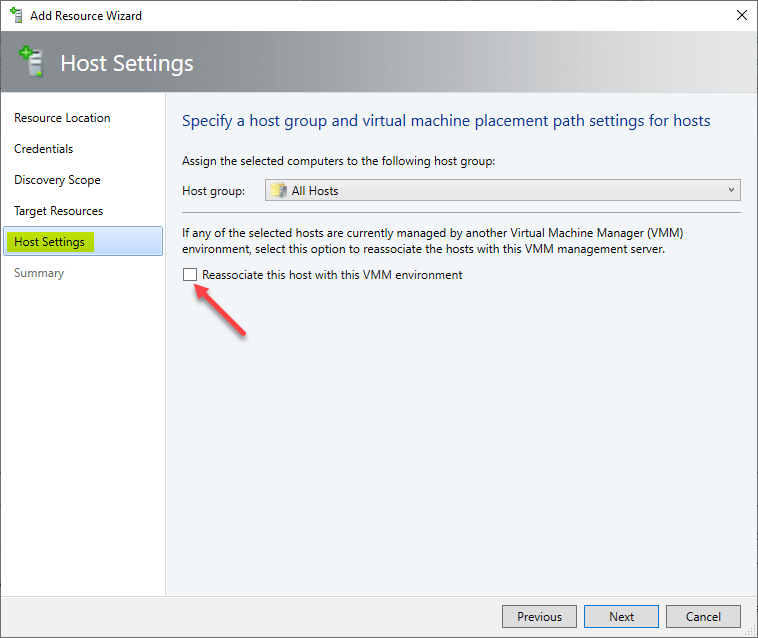
Finally, on the Summary screen, the configuration settings are listed for the changes that will be made (adding the Hyper-V cluster to SCVMM). One of the great features on the summary screen is the View Script button. Clicking the View Script button reveals the PowerShell code required to perform the action that we are performing through the SCVMM Add Host/Cluster wizard.
For the operation listed in this walkthrough, the PowerShell code is the following:
$credential = Get-Credential
# Get Host Group ‘All Hosts’
$hostGroup = Get-SCVMHostGroup -ID “0e3ba228-a059-46be-aa41-2f5cf0f4b96e”
Add-SCVMHostCluster -Name “S2Dcluster.cloud.local” -RunAsynchronously -VMHostGroup $hostGroup -Credential $credential
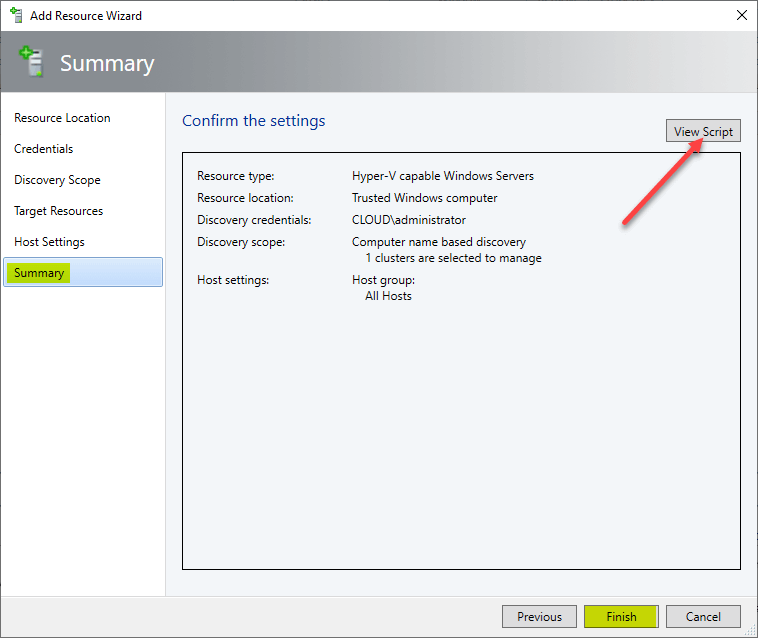
After clicking the Finish button, the Job screen opens to display the progress of adding the new Hyper-V cluster with its member hosts to the Host group selected during the wizard.
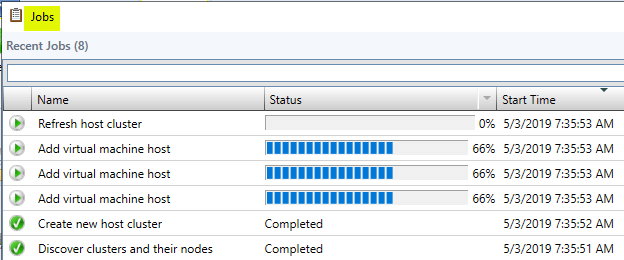
After adding the Hyper-V cluster to SCVMM, we now see the new cluster listed under the All Hosts group and the individual hosts listed in the “hosts” pane.
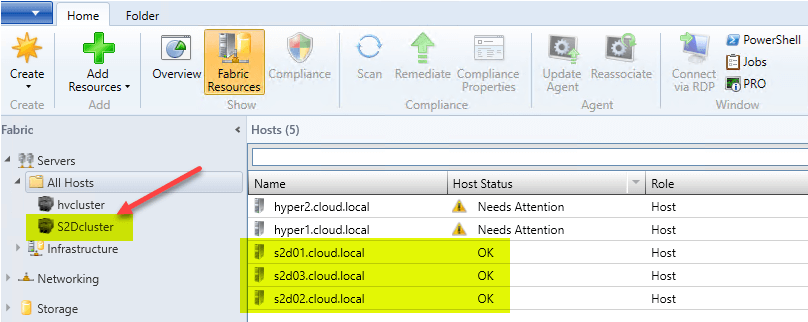
After adding the Hyper-V Cluster, we can take a look at the options available to us for management.
Note with SCVMM, the actions you can take depends on the context of where you are in the interface. Below, we see the difference between two of the different dashboards – VMs and Services and Fabric.
In the VMs and Services dashboard, you see the VMs running in the cluster and have actions related to VM operations that are listed when you right-click one of the VMs.
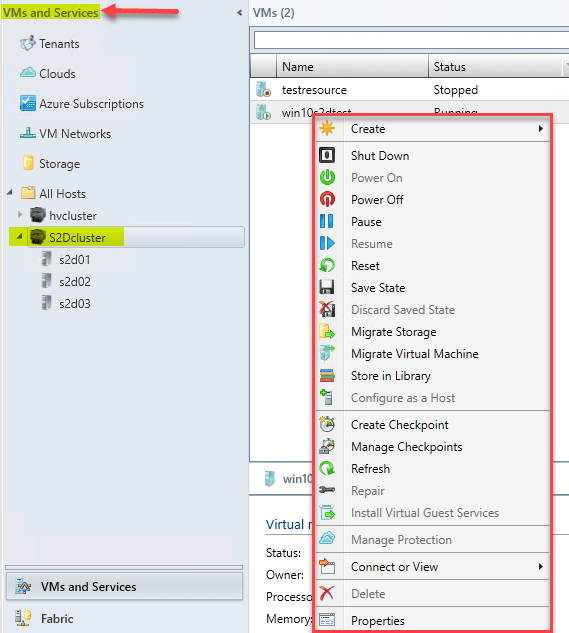
In the Fabric dashboard, you see the hosts listed out when you click on one of the clusters under the All Hosts host group. Right-clicking on one of the hosts shows the actions available for performing on the particular Hyper-V hosts.
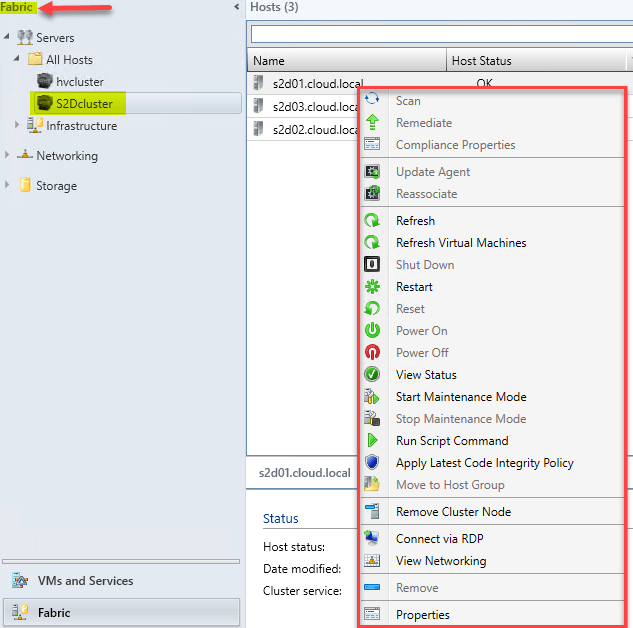
Concluding Thoughts
Once you have System Center 2019 Virtual Machine Manager provisioned, the first task that you will want to perform is to actually add a Hyper-V cluster or host(s) to SCVMM. This is a very simple process as shown of following the Add Resource wizard. As long as you have the permissions via the credentials you are using, this process generally works without issue. Additionally, you can see the PowerShell code that can be used after completing the Add Resource wizard and this can be customized and used for the next resource to add to SCVMM. SCVMM administration is very sensitive to the context of the dashboard you are in, such as VMs and Services and Fabrics. Relevant to the respective dashboard, you will see the actions listed to either interact with the host or virtual machines running in the cluster.
Related Posts:
System Center Virtual Machine Manager 2019 – Part 1 : Overview and Installation
Beginners’ Guide for Microsoft Hyper-V: Hyper-V P2V Conversion – Part-55
How to quickly deploy Virtual Machine with Hyper-V VM Templates
Managing and Monitoring Hyper-V Cluster on Windows Server
Follow our Twitter and Facebook feeds for new releases, updates, insightful posts and more.



Leave A Comment